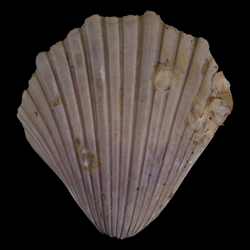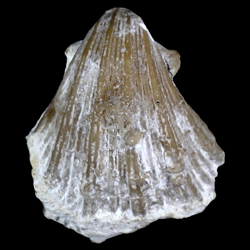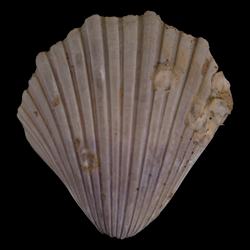
Pectinidae

- Phylum: Mollusca
- Class: Bivalvia
- Order: Pectinida
- Family: Pectinidae
Overview
Pectinidae Rafinesque, 1815
Common Name: True scallops
Extant/Extinct
Key morphological features: The shells are often thin, equivalve or inequivalve, with inequivalve species most often having a more inflated right valve. The shell is composed of a combination of aragonite and calcite and coloration is often vibrant. Pectinid shells usually exhibit strong radial ribs on the exterior, but ornamentation can also be absent and may also differ between valves of the same individual.
SIZE: Up to ~300-500mm
Paleoecology: The Pectinidae are mostly marine bivalves that attach with byssal threads to substrate. Some species are free living, however, and some are even capable of 'swimming' to escape danger by forcefully opening and closing their valves. Pectinids also have eyes at the edge of the mantle that may be capable of coarse image formation. The Pectinidae can be found worldwide and inhabit a range of environments from the intertidal zone to the deep sea.
MOBILITY: Stationary and mobile (swim)
FEEDING MODE: Suspension Feeder
HABITAT: Epifaunal
Sources:
Cox, L.R., et al. 1969. Systematic Descriptions, in Cox et al., eds., Treatise on Invertebrate Paleontology, Part N, Mollusca 6, Volume 1. The University of Kansas and Geological Society of America. 489 pp.
Mikkelsen, P.M., and Bieler, R. 2008. Seashells of Southern Florida: Bivalves. Princeton, New Jersey: Princeton University Press. 503 pp.

